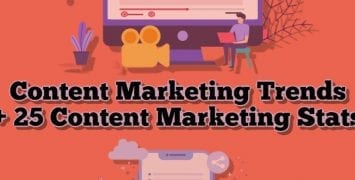There’s something obvious about content which both myself and lots of other SEO pros tend to forget. In order for your content to effectively lead to conversions, that content needs to be read.
You can’t just create content. You have to create engaging content. The kind of content that grabs your reader by the collar and says “You have to read this! The benefits are tremendous and you’ll be missing out if you don’t use this information.”
This easier said than done. There’s no one “magic bullet” to which readers respond to. But there are a few techniques which, when combined, can significantly increase reader engagement.
I’m going to share those seven techniques with you now. When you start to apply these principles to your published pieces, readers will respond to your content like never before.
1. Don’t Forget the Basics
Proper spelling, good formatting, and accurate research never go out of style. Don’t muddle your message with poor copywriting. If necessary, hire a professional to craft a solid message.
2. Be Flexible
An article doesn’t need to be truly finished. As you learn more about your audience, and what information they’re seeking, you can go back and edit your existing articles. This a great way to add new SEO life into older blog posts.
3. Craft Catchy Headlines
The average web reader is resistant. They want you to get straight to the point. A clear, bold headline will provide the basic information while also encouraging the reader to check out more information. This called “the Curiosity Gap.”
4. Use Images
Images break up the monotony of long blocks of text while also adding information. Add photos, illustrations, infographics and more. As a general rule, aim for an image every two to three paragraphs.
5. Emphasize the Content “Above the Fold”
This originally a newspaper term referencing the top and bottom half of a folded paper. Readers will scan Above the Fold quickly for items of interest. If they continue reading below the fold, you’ve likely got ‘em!
Spent time on your Above the Fold content. Show your customer that you understand their needs and that your brand has a solution. Present the solution Below the Fold, so your reader has to further engage with your content.
6. Make Your Research Interesting with a Story
Readers are turning to you for your professional insight, but that doesn’t mean they want to read anything dry and boring. Turn your research into an interesting story. Show the reader how the product and service will benefit their lives, instead of going too deeply into the technical details.
7. Add Social Proof
Testimonials from real people reduce anxiety from potential customers. People trust other people, even if those other people are strangers. Add testimonials from previous customers. Use testimonials that address specific concerns many potential customers might have. Some common issues include:
- Is there a money-back ensure?
- How does shipping work?
- Does the product really look/perform as advertised?
How to Convert Engagement to Sales
Don’t forget your overall goal: Selling a product or service. Creating content that engages readers is only the first step.
The longer your customer spends on your pages, the better connection you’re creating. They’re reading your content because they’re interested in what you have to say.
When they finish your content, you want them to feel informed. You also want to guide them towards a specific action. This called the Conversion Funnel, which is the process where you show readers a series of different pieces of content designed to explain your product and eventually lead to a sale.
This a process you’ll develop after creating a Customer Profile. Most Conversion Funnels have a few steps. You’ll send out targeted content over a period of time. As your customer becomes more familiar with your brand’s informational content, you can slowly turn the conversation more to the products and services you provide.
The 5 Parts of a Conversion Funnel
- Establish your brand’s trustworthiness and expertise in the industry.
- Identify the problem your potential customer is facing.
- Present your product or service as the solution.
- Make a sale!
- Begin the Customer Retention process to turn your first time customer into a lifetime customer.
The first step to making a sale is connecting with your potential customer. Your original content is going to be your biggest asset. Make sure your content gets read by using the seven tips above. This will help your content engage with readers while reducing their resistance to your message.




